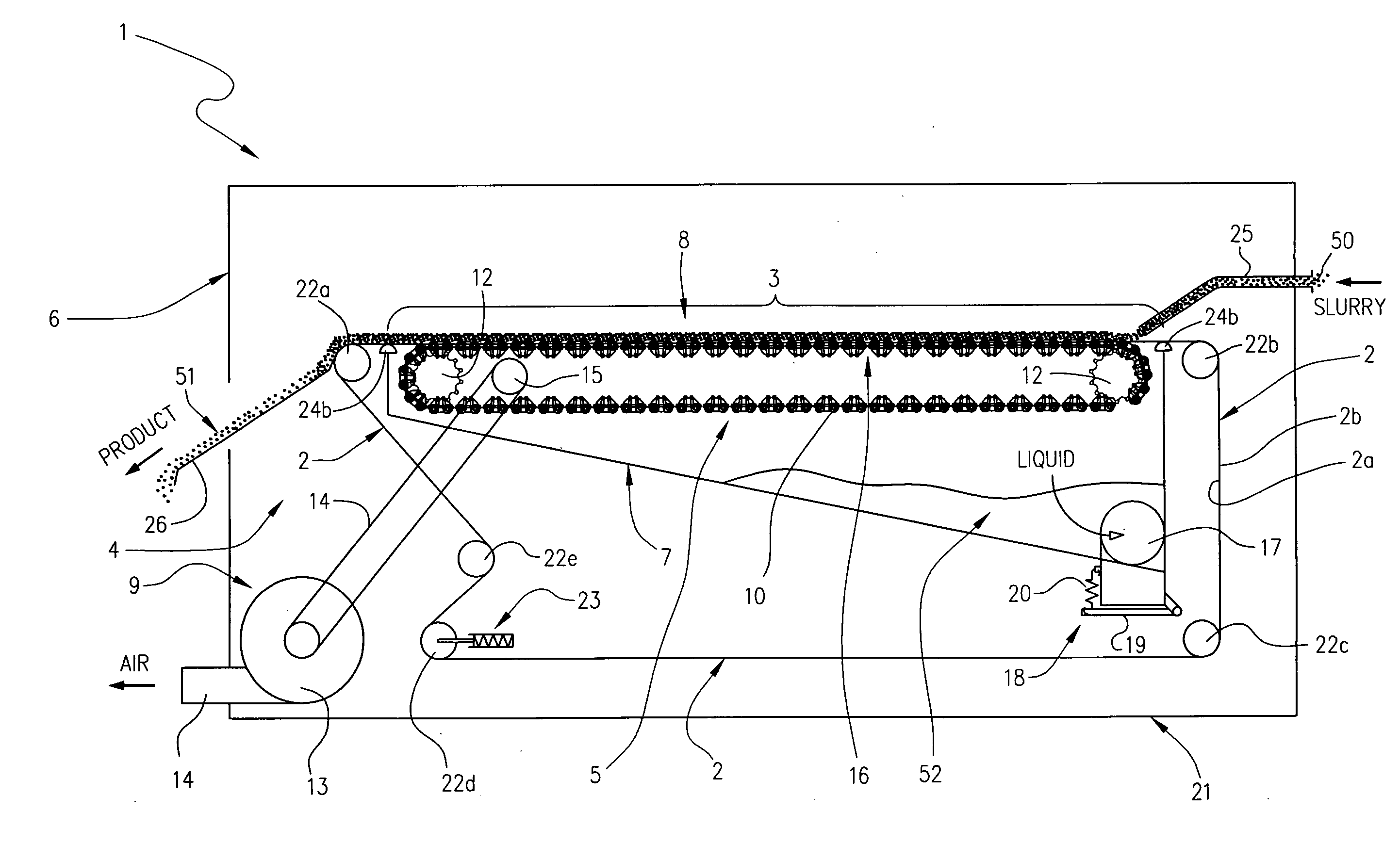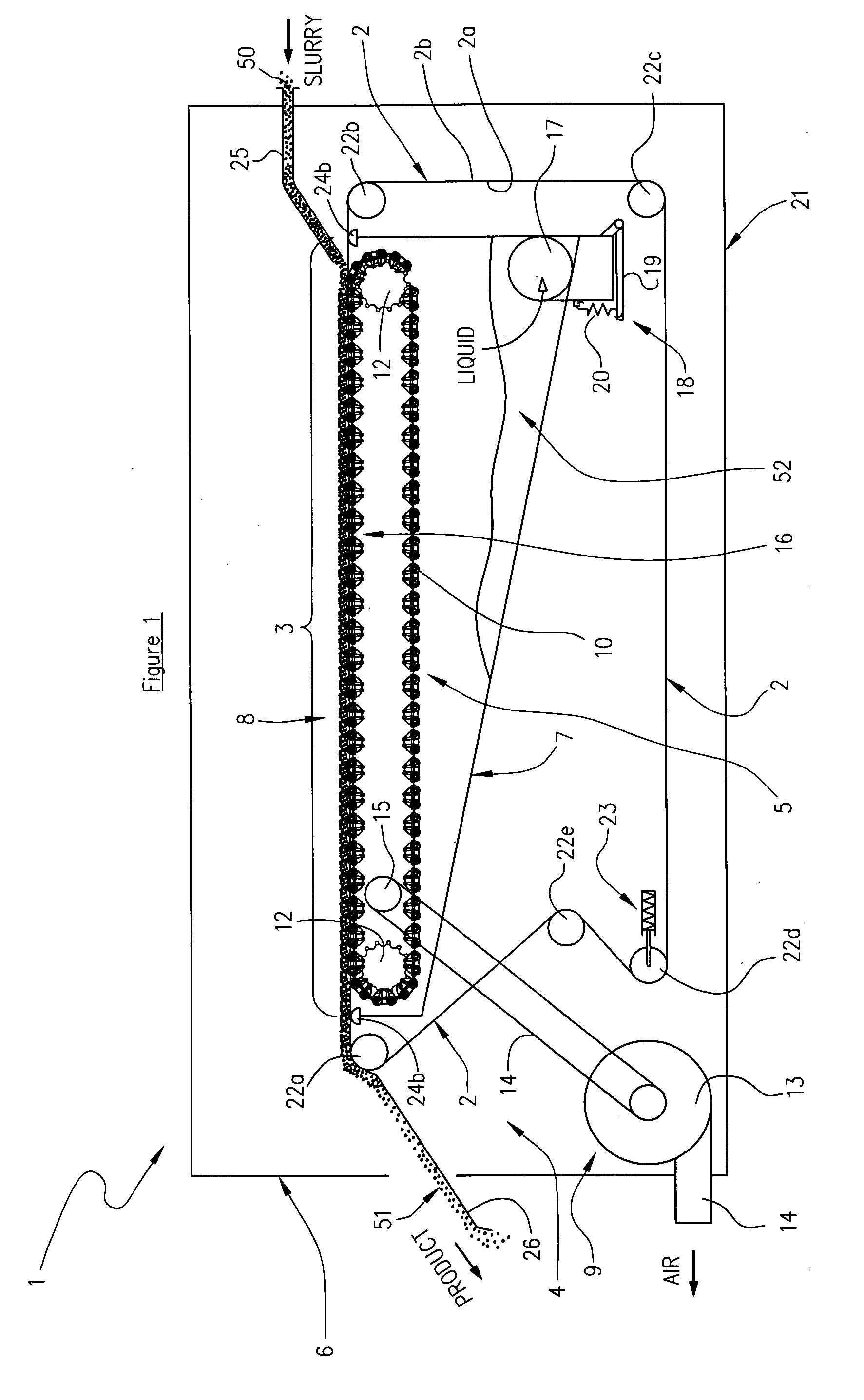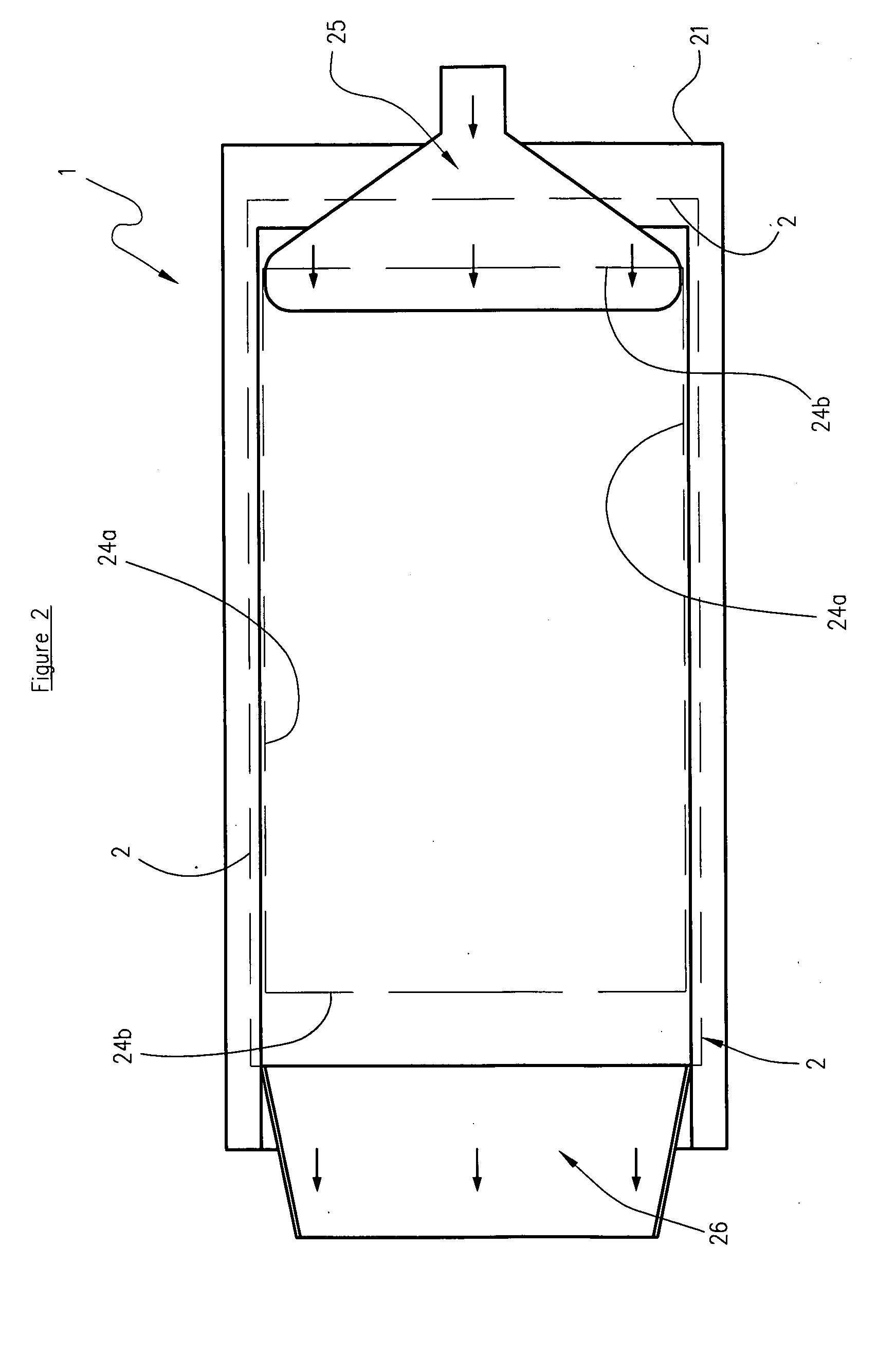Liquid removal apparatus
a technology of liquid removal apparatus and liquid filter, which is applied in the direction of moving filter element filter, filtration separation, separation process, etc., can solve the problems of complex system, unsuitable compression technique, unsuitable centrifugal method, etc., and achieves the effect of enhancing product control, reducing liquid content, and reducing liquid conten
- Summary
- Abstract
- Description
- Claims
- Application Information
AI Technical Summary
Benefits of technology
Problems solved by technology
Method used
Image
Examples
Embodiment Construction
[0302]FIGS. 1 to 4 show a first example of a liquid removal apparatus (1) according to one preferred embodiment of the present invention. The liquid removal apparatus (1) is adapted to at least partially separate liquid from an infeed composite slurry (50) of liquid and solids.
[0303]The liquid removal apparatus (1) has a movable, permeable membrane provided in the form of filter belt (2) having a first side (2a) and an opposing second side (2b). At least a portion (hereinafter termed the ‘loaded belt portion’ (3)) of the second side (2b) is configured to receive the slurry (50). The filter belt (2) is liquid permeable but substantially impermeable to the solid content of the slurry (50) such that the majority of the solids content is prevented from passing through.
[0304]The liquid removal apparatus (1) has a permeable membrane support system (4) configured to provide a movable support for the loaded belt portion (3). The support system (4) has a transport deck (5) located in contact...
PUM
| Property | Measurement | Unit |
|---|---|---|
| permeable | aaaaa | aaaaa |
| pressure | aaaaa | aaaaa |
| flexible | aaaaa | aaaaa |
Abstract
Description
Claims
Application Information
 Login to View More
Login to View More - R&D
- Intellectual Property
- Life Sciences
- Materials
- Tech Scout
- Unparalleled Data Quality
- Higher Quality Content
- 60% Fewer Hallucinations
Browse by: Latest US Patents, China's latest patents, Technical Efficacy Thesaurus, Application Domain, Technology Topic, Popular Technical Reports.
© 2025 PatSnap. All rights reserved.Legal|Privacy policy|Modern Slavery Act Transparency Statement|Sitemap|About US| Contact US: help@patsnap.com



